The State of Battery Recycling in Australia
The State of Battery Recycling in Australia
Battery Recycling in Australia : A Comprehensive Overview

Introduction
Batteries are integral to modern life, powering everything from smartphones and laptops to electric vehicles and renewable energy storage systems. With the proliferation of battery-powered devices, the management of end-of-life batteries has become a significant environmental and economic concern. Effective battery recycling is essential to recover valuable materials, prevent environmental pollution, and support a sustainable circular economy. As suppliers of products and systems to the battery recycling industry in Australia, we provide an in-depth analysis of the current state of the industry, focusing on lithium-ion (Li-ion), lead-acid, nickel-metal hydride (Ni-MH), and other battery types, highlighting significant projects, and exploring future directions.
The Importance of Battery Recycling
Environmental Concerns
- Hazardous Materials: Batteries contain hazardous substances such as lead, cadmium, nickel, and electrolytes that can leach into the environment if not properly managed.
- Resource Depletion: Critical minerals like lithium, cobalt, nickel, and rare earth elements are finite resources; recycling reduces the demand for virgin materials.
- Waste Volume: The increasing use of batteries leads to a growing volume of battery waste, requiring effective management strategies.
Resource Recovery
- Valuable Materials: Batteries contain materials that can be recovered and reused, reducing the need for mining and refining new raw materials.
- Energy Savings: Recycling metals from batteries consumes less energy compared to extracting and processing virgin ores.
Current State of Battery Recycling in Australia
Battery Consumption and Waste Generation
- Battery Usage: Australia consumes a significant volume of batteries annually, with growth driven by consumer electronics, renewable energy storage, and electric vehicles.
- Waste Generation: Approximately 17,500 tonnes of handheld batteries (weighing less than 5 kg) reach end-of-life each year.
- Recycling Rates:
- Lead-Acid Batteries: Over 90% recycling rate, due to established collection systems and the value of lead.
- Lithium-Ion Batteries: Recycling rate is around 10%, indicating substantial room for improvement.
- Nickel-Metal Hydride (Ni-MH) and Other Batteries: Low recycling rates due to collection challenges and economic factors.
Regulatory Framework
- Product Stewardship Act 2011: Provides a framework for managing the environmental impacts of products, including batteries.
- Battery Stewardship Scheme (BSS): Launched in 2020, it is a voluntary, industry-led scheme aimed at increasing battery collection and recycling.
- Hazardous Waste Regulations: Govern the handling, transport, and disposal of hazardous battery waste.
Infrastructure and Capacity
- Recycling Facilities: Australia has several facilities capable of processing lead-acid batteries, but limited capacity for other battery types.
- Export: A significant portion of collected Li-ion batteries is exported for recycling due to limited domestic processing capabilities.
- Collection Systems: Collection points include retail take-back programs, recycling centers, and specialized battery collection bins.
As suppliers to this industry, we provide essential equipment and systems that enhance the efficiency and capacity of these facilities, contributing to technological advancement and increased recycling rates.
Types of Batteries and Their Recycling Processes
Lead-Acid Batteries
- Applications: Used in automotive, industrial, and backup power systems.
- Recycling Process:
- Collection: Collected from automotive workshops, retailers, and recycling centers.
- Breaking and Separation: Batteries are broken apart, and components are separated into lead, plastic, and acid.
- Smelting: Lead is smelted and refined for reuse.
- Plastic Recycling: Polypropylene casings are recycled into new battery cases or other products.
- Acid Treatment: Sulfuric acid is neutralized or converted into sodium sulfate for use in detergents and textiles.
Lithium-Ion Batteries
- Applications: Power consumer electronics, electric vehicles, and energy storage systems.
- Recycling Challenges: Complex chemistries, risk of fire or explosion, and low economic value of recovered materials compared to lead-acid batteries.
- Recycling Process:
- Collection: Batteries are collected from consumers, businesses, and recycling programs.
- Discharge and Safety Measures: Batteries are discharged to reduce the risk of thermal events.
- Mechanical Processing: Batteries are shredded, and materials are separated.
- Hydrometallurgical Processing: Uses chemical processes to recover metals like lithium, cobalt, nickel, and manganese.
- Pyrometallurgical Processing: High-temperature smelting recovers metals, but may result in loss of lithium and other elements.
Nickel-Metal Hydride (Ni-MH) and Other Batteries
- Applications: Used in hybrid vehicles, power tools, and some consumer electronics.
- Recycling Process:
- Similar to Li-ion batteries but with processes tailored to recover nickel, cobalt, and rare earth elements.
Our products and systems are integral at various stages of these processes, particularly in mechanical processing, material separation, and safety management.
Benefits of Battery Recycling
Environmental Benefits
- Pollution Prevention: Proper recycling prevents hazardous substances from contaminating soil and water.
- Resource Conservation: Recovers valuable metals, reducing the need for mining and refining new materials.
- Emission Reduction: Recycling metals consumes less energy and produces fewer greenhouse gas emissions than primary production.
Economic Benefits
- Job Creation: Supports employment in collection, processing, manufacturing, and research sectors.
- Market Development: Stimulates markets for recycled materials and promotes innovation.
- Cost Savings: Provides cost-effective raw materials for battery manufacturers and other industries.
By supplying advanced equipment and systems, we contribute to amplifying these benefits, enabling the industry to operate more sustainably and economically.
Challenges Facing the Industry
Technical Challenges
- Complex Chemistries: Diverse battery chemistries require different recycling processes, complicating operations.
- Safety Risks: Risk of fire and explosion during collection, storage, and processing of Li-ion batteries.
- Material Recovery Efficiency: Developing cost-effective methods to recover all valuable materials, including lithium.
Our advanced technologies address these challenges by improving material separation accuracy, enhancing safety measures, and increasing recovery efficiency.
Collection and Participation
- Low Collection Rates: Lack of consumer awareness and convenient collection points leads to low recycling rates for handheld batteries.
- Stockpiling: Consumers often store used batteries rather than recycling them, delaying material recovery.
Economic Constraints
- Cost of Recycling: High costs associated with processing, especially for Li-ion batteries, can affect profitability.
- Market Fluctuations: Prices for recovered materials can be volatile, impacting the economic viability of recycling operations.
Regulatory and Compliance Issues
- Voluntary Schemes: The current voluntary nature of the Battery Stewardship Scheme may limit participation and effectiveness.
- Export Restrictions: International regulations on hazardous waste can affect the export of batteries for recycling.
Government Initiatives and Policies
Battery Stewardship Scheme (BSS)
- Overview: Managed by the Battery Stewardship Council (BSC), the scheme aims to increase battery collection and recycling rates through a levy on imported batteries.
- Incentives: Provides rebates to collectors and recyclers to offset costs.
- Goals: Targets a 90% recycling rate for handheld batteries by 2030.
Regulatory Developments
- Product Stewardship Legislation: Discussions on moving from voluntary to mandatory schemes to ensure broader participation.
- Hazardous Waste Management: Strengthening regulations on the handling and disposal of hazardous battery waste.
Funding and Support
- Recycling Modernisation Fund: Government funding to support the development of domestic battery recycling facilities.
- Grants and Incentives: Support for businesses investing in recycling technologies and infrastructure.
These policies promote the growth of the battery recycling industry, creating opportunities for suppliers like us to support expanding infrastructure needs.
Highlighting Significant Projects in Australia
Envirostream Australia
- Overview: A leading Li-ion battery recycler, part of Lithium Australia.
- Facilities: Operates a state-of-the-art facility in Melbourne specializing in the recycling of Li-ion batteries.
- Process:
- Mechanical separation of battery components.
- Recovery of mixed metal dust containing cobalt, nickel, lithium, and graphite.
- Contribution: Enhances domestic processing capacity and reduces reliance on exporting battery waste.
EcoBatt
- Overview: EcoBatt focuses on the collection and recycling of all battery types.
- Services:
- National collection network for businesses and consumers.
- Provides safe transport and processing of hazardous battery waste.
- Impact: Increases battery recycling rates through convenient collection solutions.
TES Australia
- Overview: TES provides comprehensive battery recycling services, including for electric vehicle (EV) batteries.
- Capabilities:
- Processes large-format batteries from EVs and energy storage systems.
- Offers second-life solutions for batteries with remaining capacity.
- Innovation: Develops advanced recycling technologies to recover high-value materials.
Battery Rescue
- Overview: Specializes in the collection and recycling of lead-acid batteries in Western Australia.
- Initiatives:
- Provides bulk collection bins to businesses.
- Ensures environmentally responsible recycling practices.
- Significance: Contributes to high recycling rates of lead-acid batteries and promotes best practices.
Our collaboration with these and other projects involves supplying advanced equipment and systems that enhance processing efficiency, safety, and environmental performance.
Innovations and Future Prospects
Technological Advancements
- Direct Recycling:
- Processes that recover cathode materials for direct reuse in new batteries without extensive refining.
- Advanced Material Recovery:
- Hydrometallurgical processes that improve recovery rates of lithium and other critical minerals.
- Automation and AI:
- Use of robotics and artificial intelligence for disassembly and sorting, enhancing safety and efficiency.
Our commitment to innovation ensures that we offer the latest technologies to recycling facilities, improving environmental outcomes and economic viability.
Circular Economy Initiatives
- Second-Life Applications:
- Repurposing used batteries with remaining capacity for energy storage applications.
- Design for Recycling:
- Encouraging manufacturers to design batteries that are easier to disassemble and recycle.
- Extended Producer Responsibility (EPR):
- Policies holding manufacturers accountable for end-of-life management, promoting sustainable product design.
Market Development
- Domestic Processing:
- Expanding local recycling capabilities to reduce reliance on exports and enhance supply chain resilience.
- Material Supply for Manufacturing:
- Supplying recovered materials to domestic battery manufacturers, supporting industry growth.
Industry Collaboration
- Partnerships:
- Collaboration between government entities, industry players, and research institutions is crucial for advancing technology and expanding markets.
- Investment in R&D:
- Increased funding for research and development to improve recycling processes and develop innovative applications for recycled materials.
We actively participate in industry collaborations and invest in research and development to contribute to the industry’s sustainable future.
Where From Here: The Future of Battery Recycling in Australia
The battery recycling industry in Australia is poised for significant growth and innovation:
- Policy Advancements: Potential move towards mandatory stewardship schemes will increase recycling obligations and opportunities.
- Technological Innovation: Advancements in processing technologies will improve efficiency, safety, and environmental performance.
- Consumer Engagement: Enhanced public awareness and convenient collection systems will boost recycling rates.
- Sustainability Goals: Aligning with national and global sustainability objectives, the industry will contribute significantly to reducing environmental impacts and supporting the renewable energy transition.
As suppliers to the battery recycling industry, we are dedicated to supporting these advancements by providing state-of-the-art products and systems that enhance efficiency, ensure safety, and contribute to the industry’s overall growth.
Conclusion
Battery recycling in Australia is essential for environmental protection, resource conservation, and sustainable development. While progress has been made, particularly with lead-acid batteries, challenges such as low recycling rates for Li-ion and other batteries, technical complexities, and economic constraints remain.
By addressing these challenges through technological innovation, policy support, and industry collaboration, Australia can enhance its battery recycling performance, benefiting both the environment and the economy. We remain committed to supporting the industry through our advanced products and systems, contributing to a more sustainable future.
References
- Battery Stewardship Council (BSC). (2023). Battery Stewardship Scheme Information. Retrieved from www.bsc.org.au
- Department of Climate Change, Energy, the Environment and Water. (2023). Battery Recycling in Australia. Retrieved from www.dcceew.gov.au
- Australian Bureau of Statistics. (2022). Waste Account, Australia. Retrieved from www.abs.gov.au
- Envirostream Australia. (2023). Lithium Battery Recycling Services. Retrieved from www.envirostream.com.au
- EcoBatt. (2023). Battery Recycling Solutions. Retrieved from www.ecobatt.net
- TES Australia. (2023). Battery Recycling and Second-Life Solutions. Retrieved from www.tes-amm.com
- Battery Rescue. (2023). Lead-Acid Battery Collection and Recycling. Retrieved from www.batteryrescue.com.au
- Product Stewardship Centre of Excellence. (2023). Best Practices in Battery Stewardship. Retrieved from www.stewardshipexcellence.com.au


